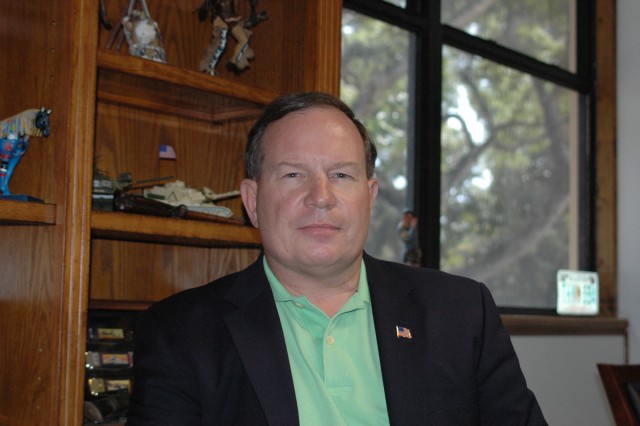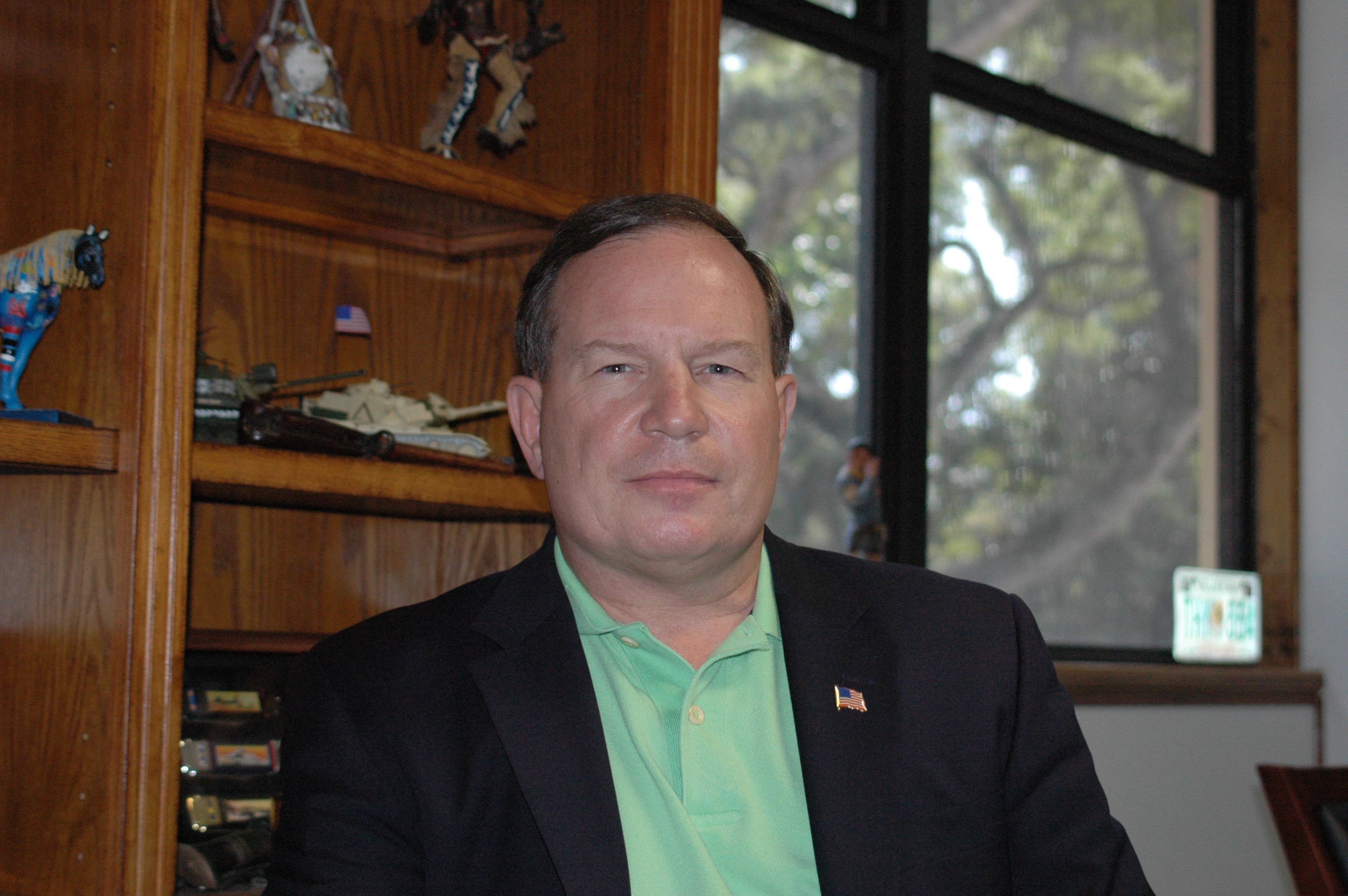
A man passionate about the Army, its people and the environment, Davis spent the ... VIEW ORIGINAL
SCHOFIELD BARRACKS, Hawaii - The Deputy Assistant Secretary of the Army Office for Environment, Safety and Occupational Health visited Hawaii, Oct. 26-31.
Tad Davis, a man passionate about the Army, its people and the environment, spent the week meeting with military and community leaders to share and continue the efforts underway in Hawaii to keep people safe.
"There are a lot of legacy clean up issues," explained Davis, Oct. 29. "With the goal ultimately of providing a healthy environment for our Soldiers, families and civilians to live, and at the same time, to make sure that we're taking good care of the environment, as well."
One of his biggest concerns is unexploded ordnance (UXO). During World War II areas on nearly every island were used for live-fire exercises. Small arms, artillery, mortars, or aerial delivered bombs were all used in training. According to Davis, with the current pace of development and repurposing of land that was once unused, there is a growing risk that people may come in contact with UXO.
So there is a major effort through the "Formerly Used Defense Site Program," to go back to these areas to do a more detailed and thorough search for UXO and clean it up, said Davis.
Going green
The Army is balancing the legacy cleanup issues of yesterday, while maintaining and improving current environmental standards and looking toward the future of a sustainable Army.
Sustainability in short, is looking to the future and determining what action to take today in order to preserve precious resources in terms of natural resources, air, water and land.
"In many cases, what that translates into is an effort on our part to build green, buy green and go green as an Army," Davis said.
Building green takes into account the green building effort that began last year and will continue for many years to come. Every building in the Army is going to be a green building, one that's more energy efficient, uses less water, is made of more durable products.
Buying green is purchasing materials that can be reused, recycled, and generate a smaller footprint of waste when it comes time to dispose of it at the end of the day.
The Army is looking at ways it can maximize the benefits of renewable energy sources, Davis explained. It is looking at solar power, wind power and hybrid technology.
"And it comes home in a very powerful way here in Hawaii, where we have over 8,000 homes here at Schofield Barracks that will be outfitted with photovoltaic arrays on their roofs, which will provide about 30 percent of the energy needed to operate those homes on an annual basis," Davis said. "When you consider the high cost of energy here on island, 30 percent is going to make a major difference."
The effort to be green doesn't just fall on things the Army can do collectively on a large scale to reduce energy consumption, water and buying less - it also falls on individuals.
Because of the large number of Soldiers, families, Army civilians and contract workers, we need to look at the individual footprint of each of those people, Davis said.
"A lot of it boils down to things we can do as individuals," added Davis. "We can look at ways individually that we reduce consumption of energy and ask ourselves 'What can we do to conserve better than we are right now."
"As we become more sustainable each week, month, year that goes by I think that all those will come together in a very powerful way that in terms of Hawaii will send a very powerful signal to the local community," Davis said.
That signal is the Army really understands the importance of taking care of the environment and the impact that it will have on future generations.
"In many cases we're leading by example all over the country, so it's something to be proud of," Davis said.
Safety
Putting on his safety hat, Davis congratulated Soldiers and Army leaders for a successful year from the safety perspective.
In 2008, the Army reduced accidental fatalities by 16 percent and aviation accidents were reduced by more than 65 percent.
He attributed the reductions to an engaged leadership and the understanding that Soldiers, civilians and family members are all equal players in the safety arena.
There are still some challenges facing the Army in terms of safety, the primary challenge is vehicle safety.
"Last year we had 51 motorcycle fatalities alone," Davis said, adding that a major cause was inexperienced riders.
Injuries from vehicular accidents in cars, SUVs and trucks are attributed to speed and those people who still do not wear a seat belt, according to Davis. "It's little things like (wearing a seat belt), that can really go a long way toward helping to preserve lives and maintain the readiness of our units," Davis added.
He stressed motorcycle training courses for riders and added that many installations, including those on Hawaii, are getting a whole new family of driving simulators.
"I think that will help reinforce good motorcycle riding procedures," he said. "But again, a lot of it boils down to leadership and then individual awareness on the part of our riders themselves."

Social Sharing